Educator Resources
SUPPORT MATERIALS
These companion guides and support materials provide teachers with practical tools to bring Thurgood Marshall’s story and legacy into the classroom.
Each resource — whether a self-paced lesson, lesson starter, or lesson plan — includes its own teacher guide to support student learning and classroom implementation. Anchored by documentary film clips and enriched with primary source analysis, the guides encourage inquiry and use strategies such as the Question Formulation Technique (QFT) to examine Marshall’s impact as “Mr. Civil Rights".
Grade 5
Use these teacher guides to introduce students to Thurgood Marshall— from his childhood to his fight for voting rights and equal education—with resources that build connections to his impact and legacy.
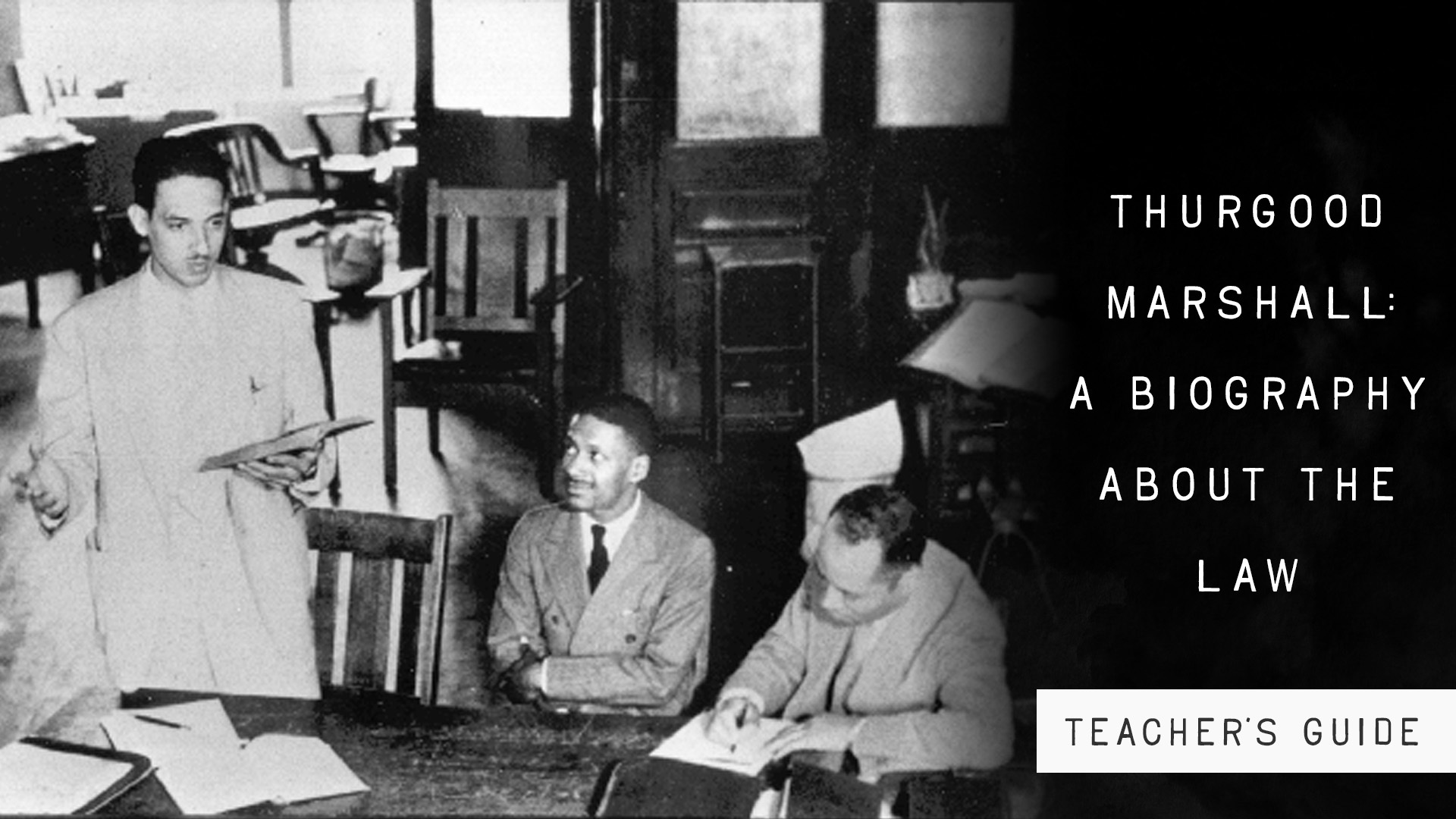
TEACHER'S GUIDE
Thurgood Marshall: A Biography about the Law
Use this self-paced lesson to guide students in exploring Thurgood Marshall’s life, achievements, and landmark cases, while examining why he valued the law and how his legacy continues today.

TEACHER'S GUIDE
Thurgood Marshall: Individuals as Tools of Change
In this lesson starter, students learn about Thurgood Marshall’s life and how his civil rights work helped change laws to make the United States fairer for al
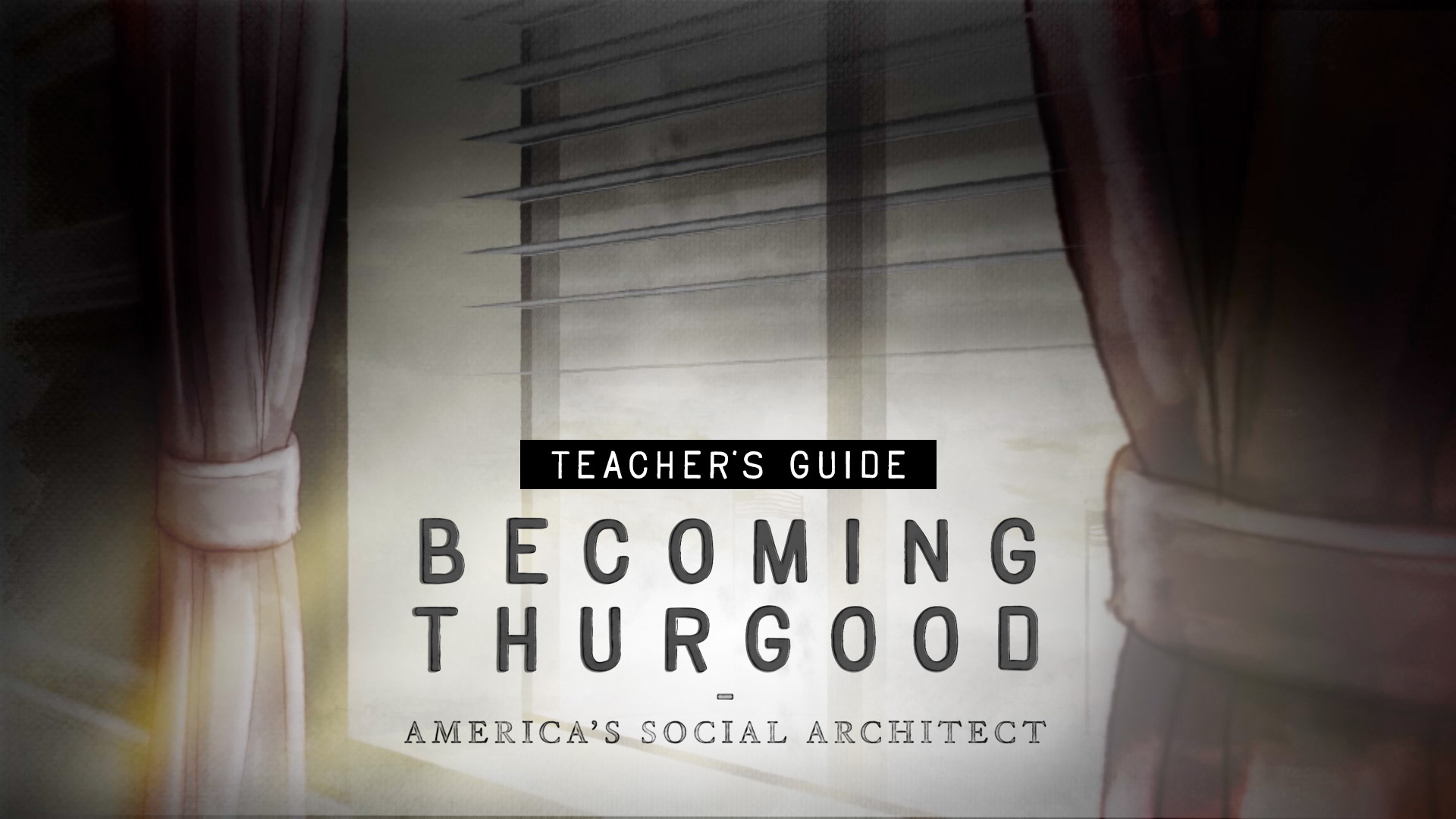
TEACHER'S GUIDE
Impact of Smith v. Allwright (1944) on Voting Rights
In this lesson starter, students explore Thurgood Marshall’s belief that voting and political change were key to equality, highlighting his 1944 Supreme Court victory in Smith v. Allwright.

TEACHER'S GUIDE
The Road to Equal Education: From HBCUs to Brown v. Board
In this lesson starter, students learn how Thurgood Marshall championed equal education and led changes that expanded opportunities for African Americans to learn, grow, and succeed.
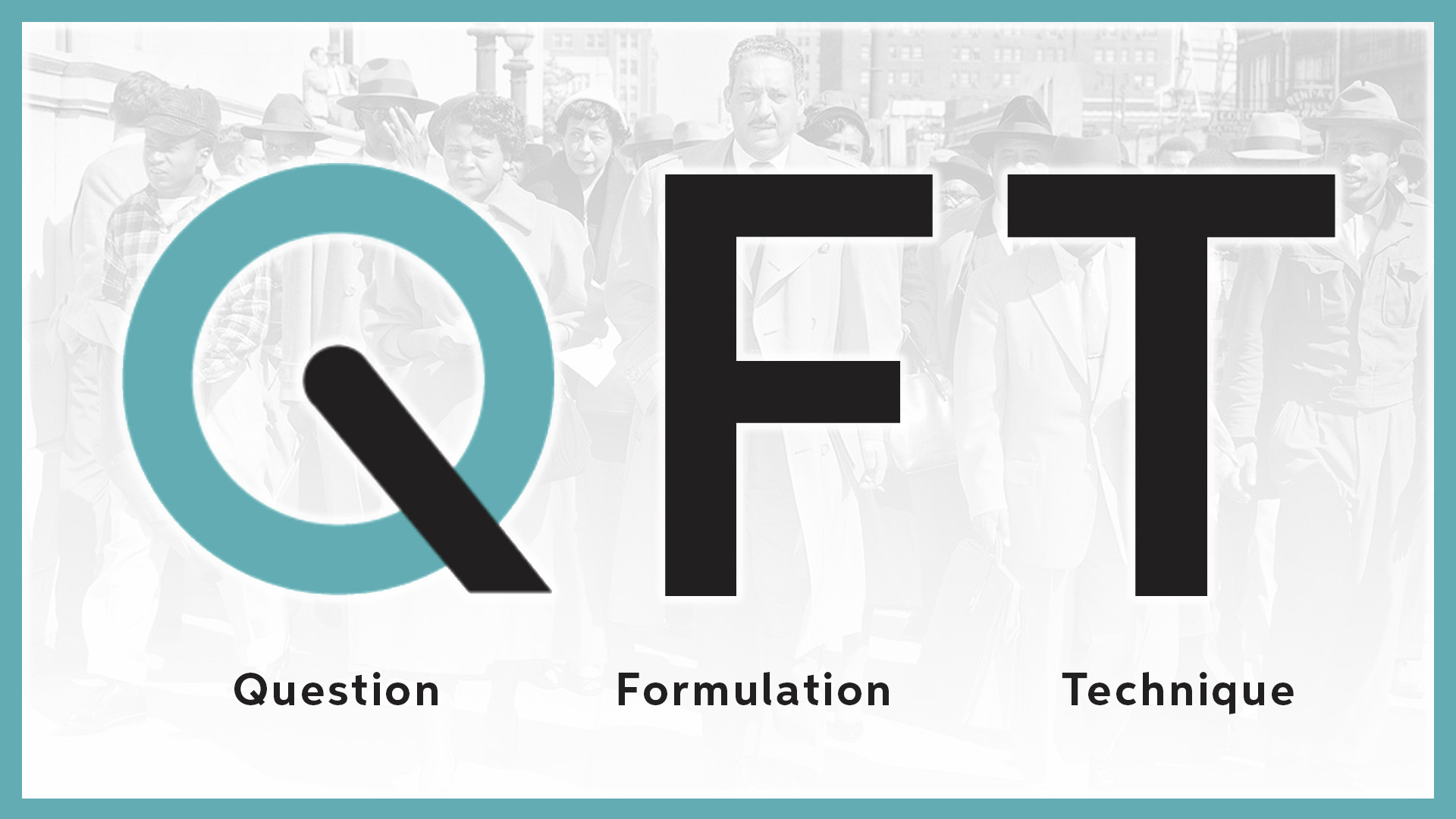
QFT LESSON PLAN
Bring inquiry to life with the Question Formulation Technique (QFT) in the “Mr. Civil Rights” grade 5 lesson. Access the lesson plan, videos, slide deck and handouts—all in one convenient place.
Grade 6-8
Use the teacher guides to explore Thurgood Marshall’s journey—from his HBCU experience to his landmark Brown v. Board victory. Lessons also examine the resistance to school integration that followed and highlight how Marshall reshaped democracy through law.
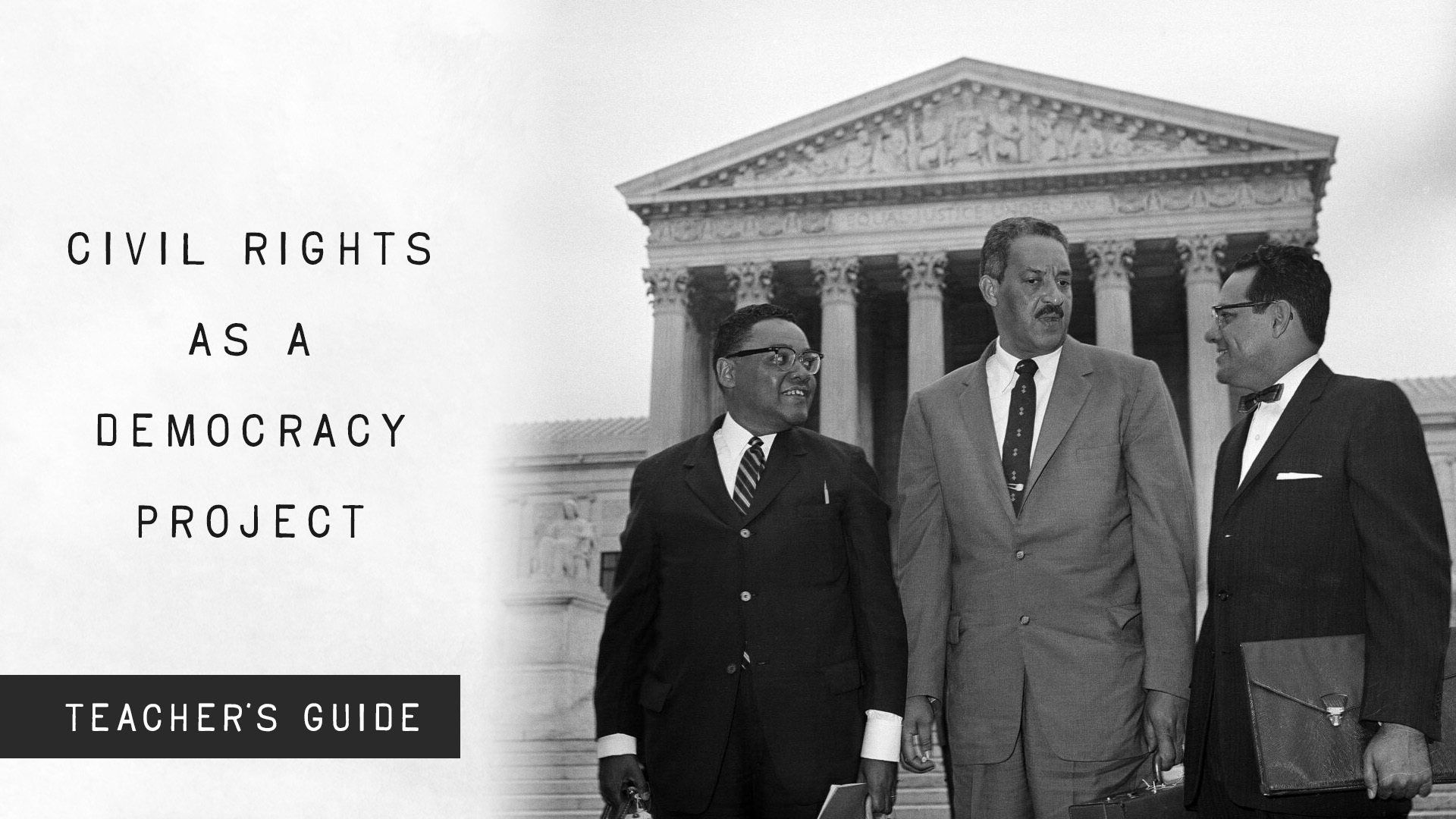
TEACHER'S GUIDE
Civil Rights as a Democracy Project
Use this interactive lesson to help students explore the Reconstruction Amendments, how African Americans were denied these rights, and how Thurgood Marshall’s work and legacy used the law to advance democracy for all.
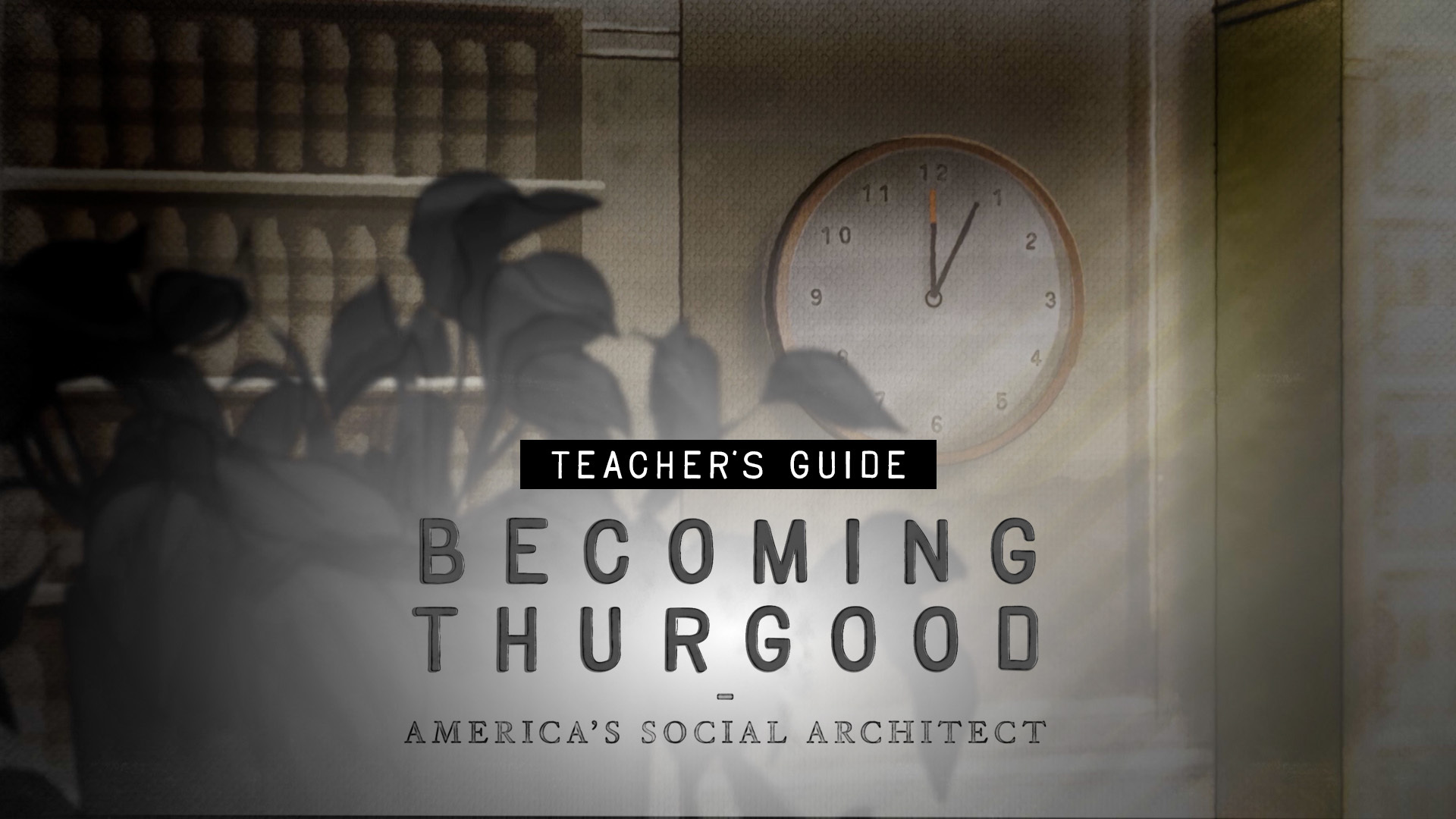
TEACHER'S GUIDE
Engineering Social Change for a Better Society
In this lesson starter, students examine how leaders of civil rights organizations used their skills, knowledge, and influence to drive social change and build a more just society for all.
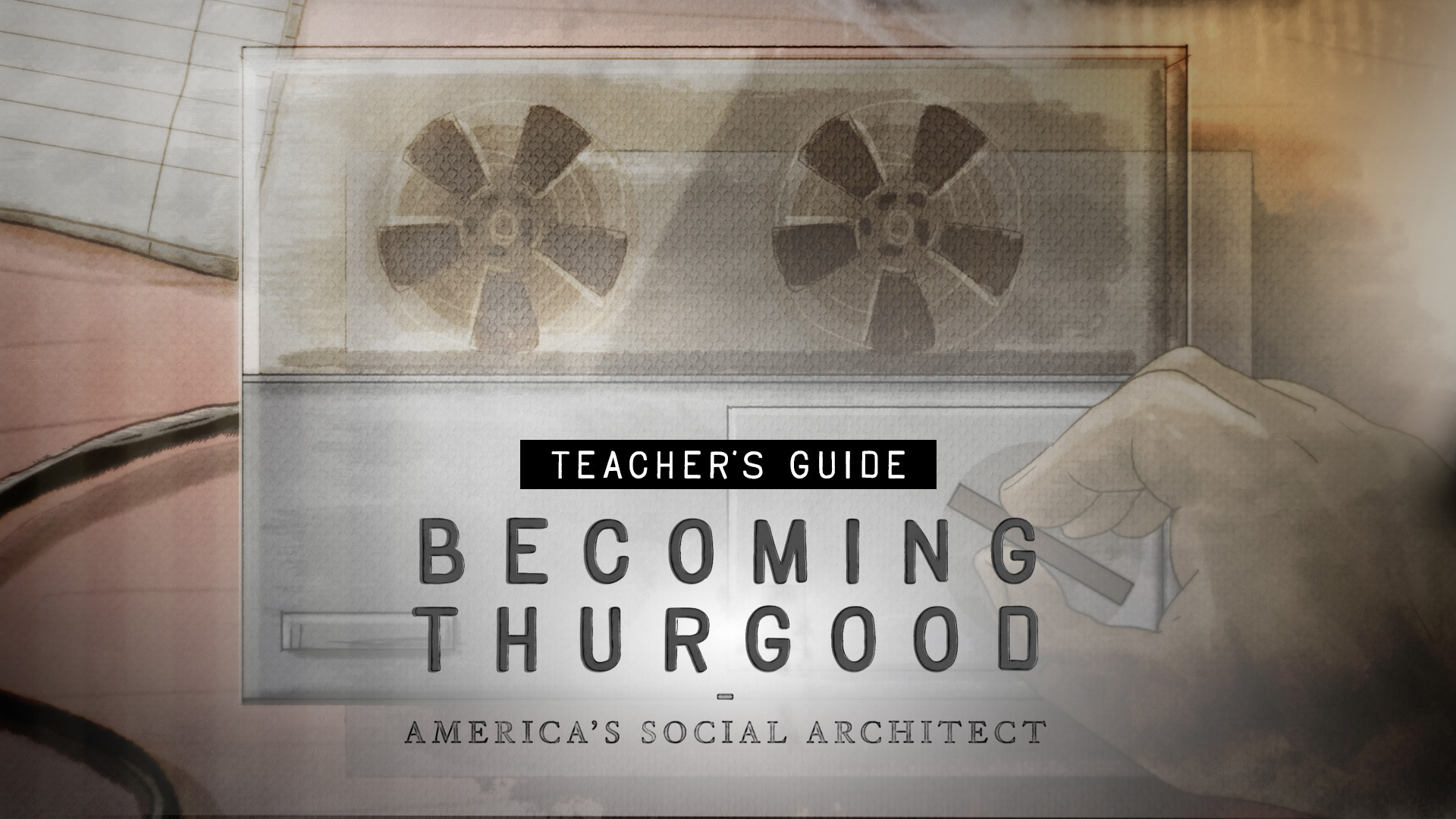
TEACHER'S GUIDE
The Important Role of HBCUs During Social Movements
In this lesson starter, students learn how Thurgood Marshall’s HBCU education prepared him for success and how HBCUs empowered African Americans to pursue careers, gain stability, and fight injustice.

TEACHER'S GUIDE
The Aftermath of Brown v. Board: Reactions and Responses
In this lesson starter, students learn how Thurgood Marshall’s legal work advanced civil and human rights and examine reactions to the Supreme Court’s decision.

QFT LESSON PLAN
Bring inquiry to life with the Question Formulation Technique (QFT) in the “Mr. Civil Rights” grade 8 lesson. Access the lesson plan, videos, slide deck and handouts—all in one convenient place.
Grade 9-12
Use the teacher guides to examine how Thurgood Marshall, as a civil rights lawyer, utilized the courts to combat segregation, expand voting rights, and challenge injustice by drawing on the 14th Amendment to advance equal protection.
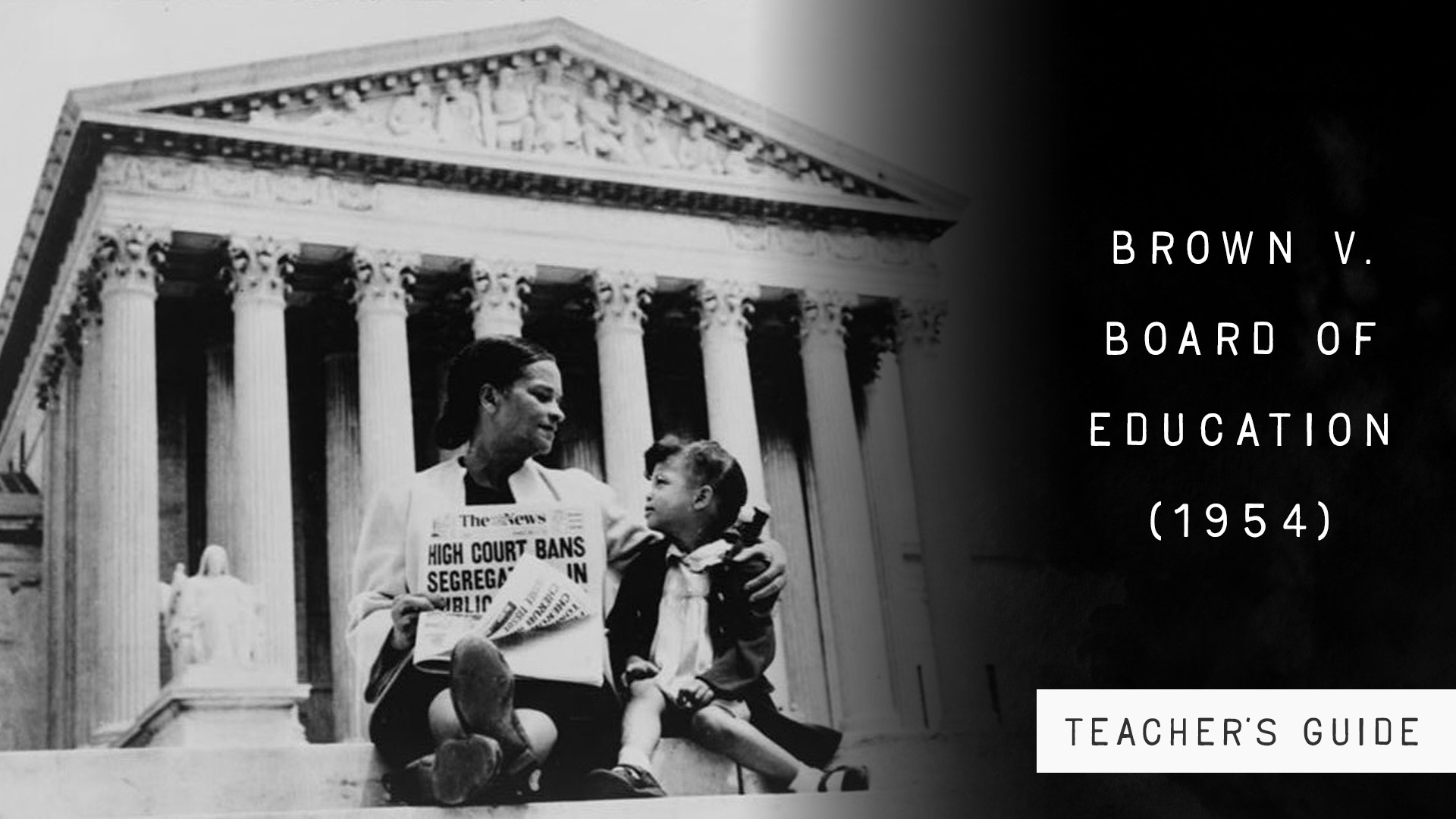
TEACHER'S GUIDE
Brown v. Board of Education (1954)
Use this self-paced lesson to introduce students to the U.S. Supreme Court’s landmark decision ending school desegregation.

TEACHER'S GUIDE
Smith v. Allwright (1944)
In this lesson starter, students examine the Supreme Court’s decision striking down Texas’s all-White primaries and understand how it expanded voting rights for Black citizens.
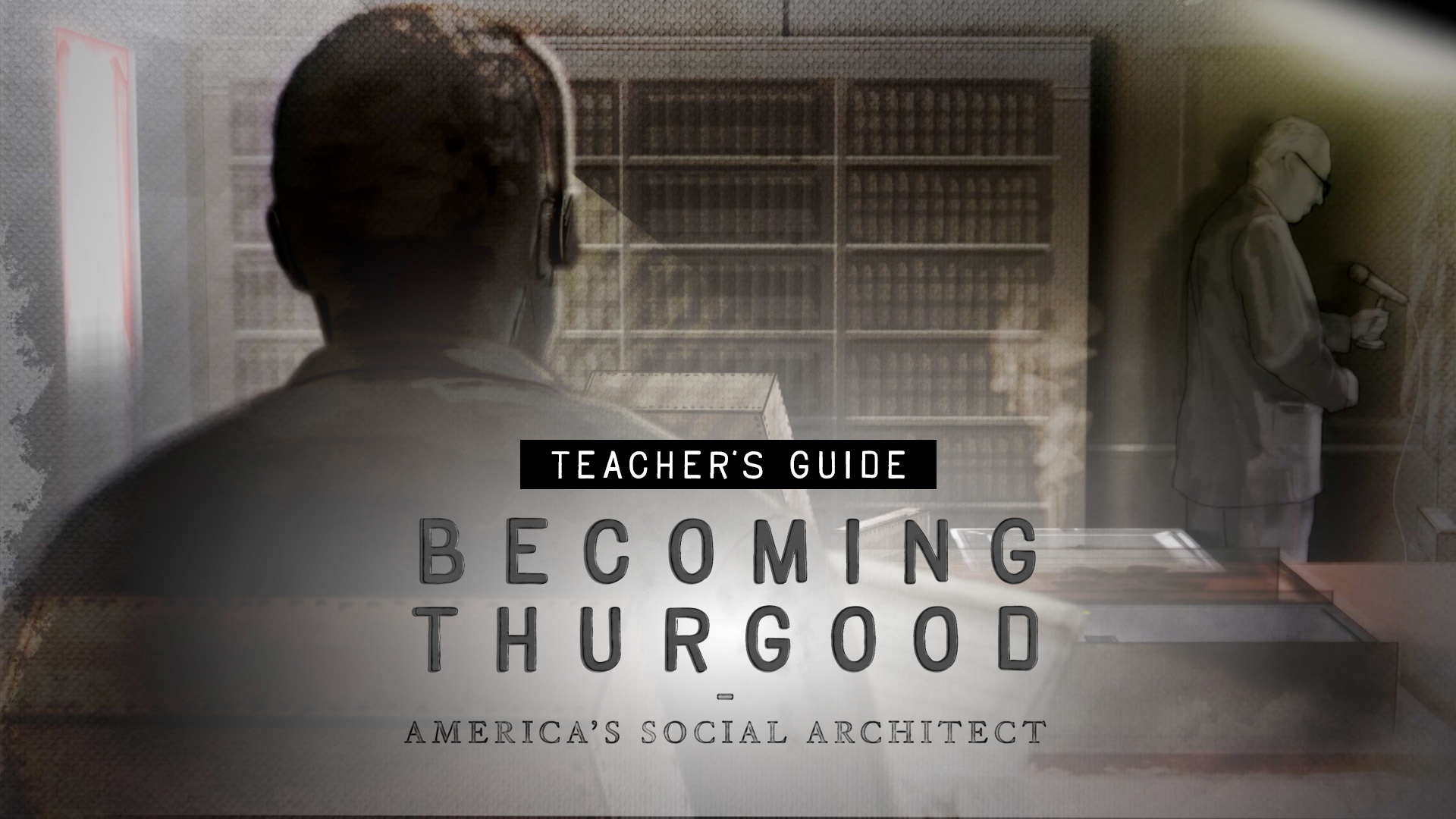
TEACHER'S GUIDE
The Groveland Case
In this lesson starter, students examine the 1949 Groveland case, exploring how violence and injustice in the criminal justice system affected the civil liberties of African Americans.

TEACHER'S GUIDE
The Impact of Brown v. Board and the Resistance to Change
In this lesson starter, students learn about the significance of the Supreme Court’s 1954 Brown v. Board of Education decision ending school segregation and examine how communities resisted the ruling.

QFT LESSON PLAN
Bring inquiry to life with the Question Formulation Technique (QFT) in the “Mr. Civil Rights” lesson for grades 9-10. Access the lesson plan, videos, slide deck and handouts—all in one convenient place.
Instructional Support
In this section, you will find an in-depth curriculum guide and student-facing graphic organizers designed to structure learning. These tools support interactive activities and lesson extensions while helping students connect Marshall’s impact to democracy and justice today.
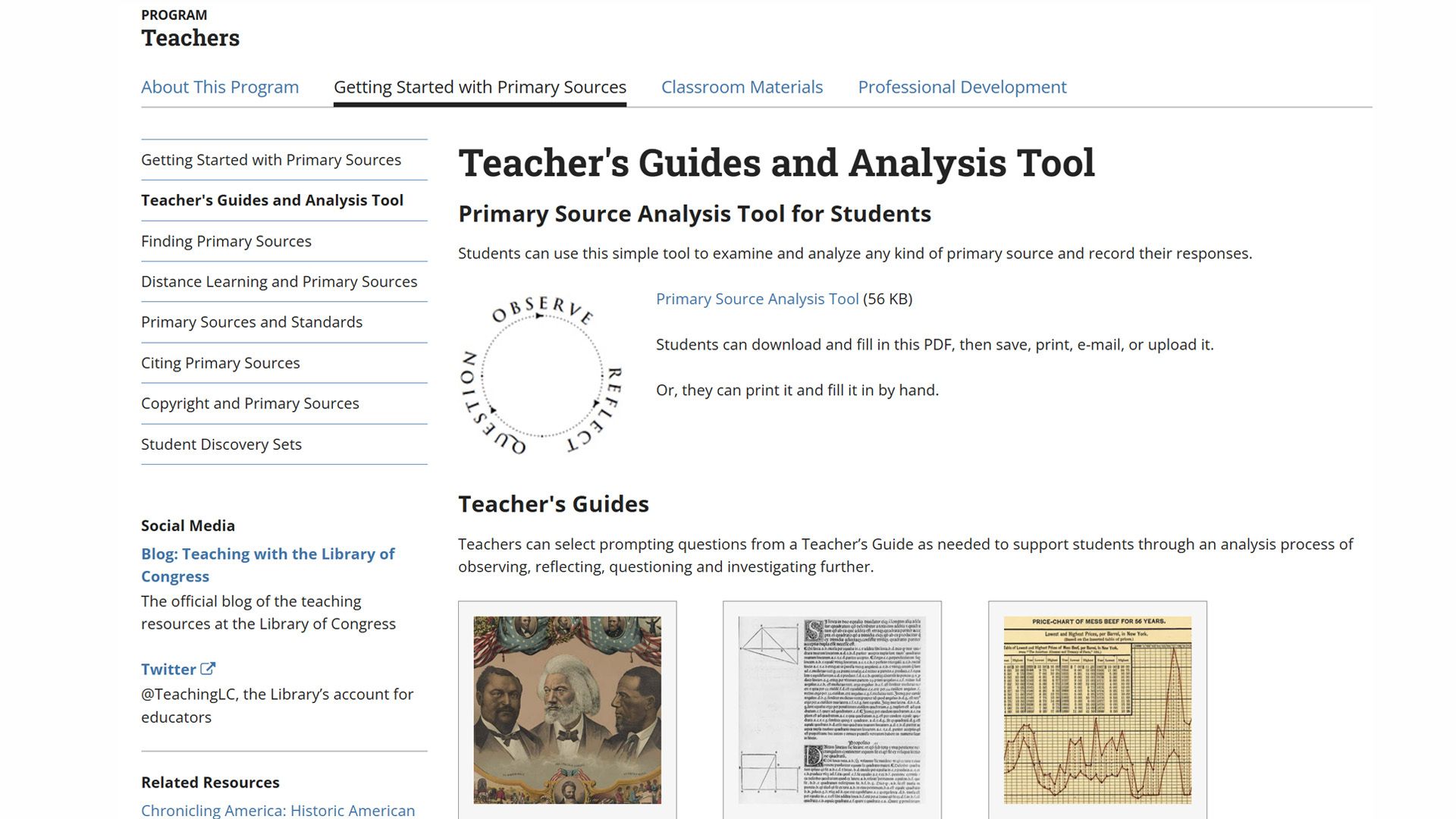
PRINTABLE
Students use the Library of Congress Primary Source Analysis Tool to investigate historical sources in the multimedia timeline and lesson starter activities.
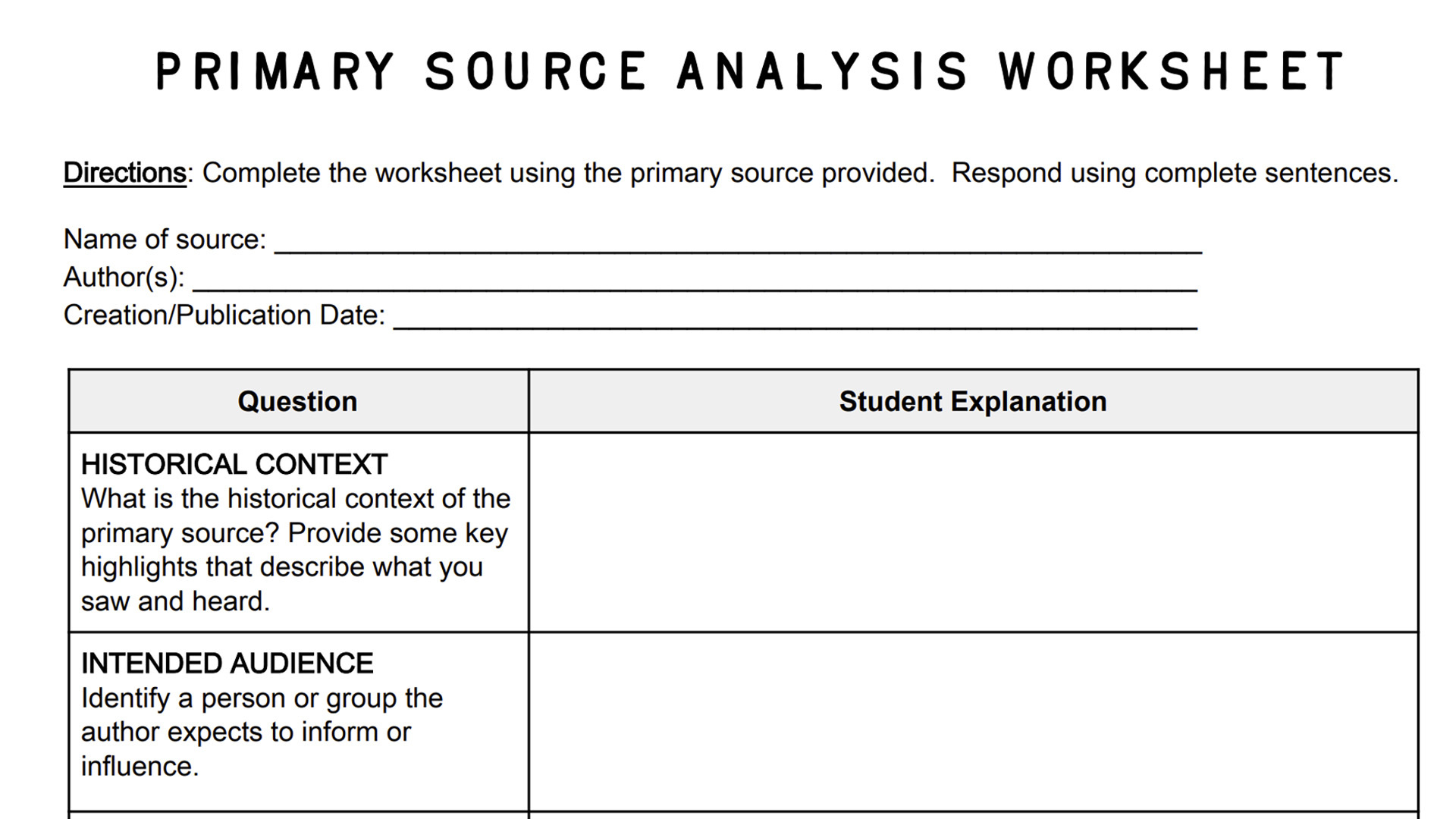
PRINTABLE
The HIPPO graphic organizer guides high school students through lesson starter activities and strengthens primary source analysis and critical thinking skills.
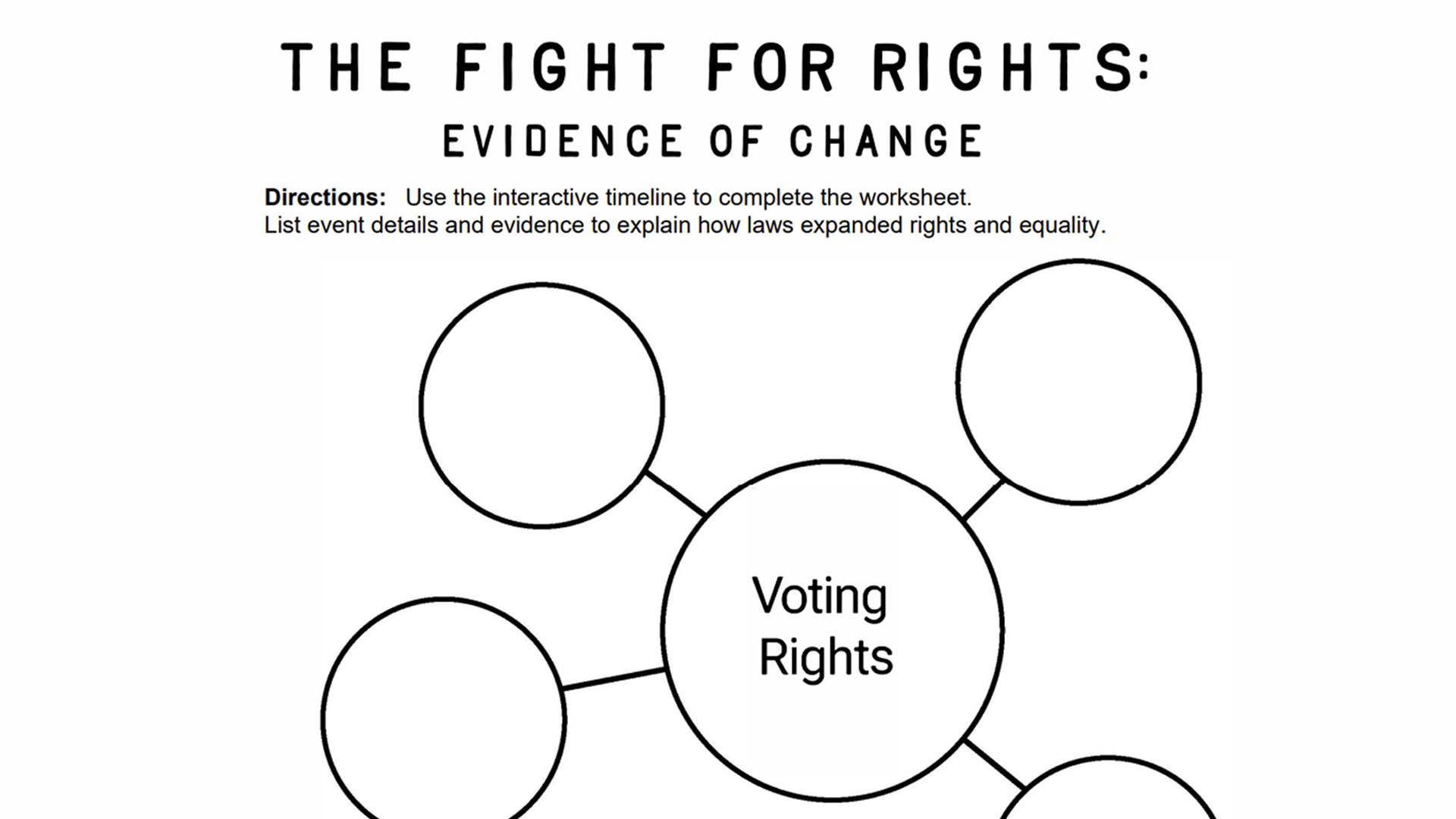
PRINTABLE
This organizer helps students connect historical problems with legal solutions, using evidence from the multimedia timeline to see how the laws advanced civil rights and equality.
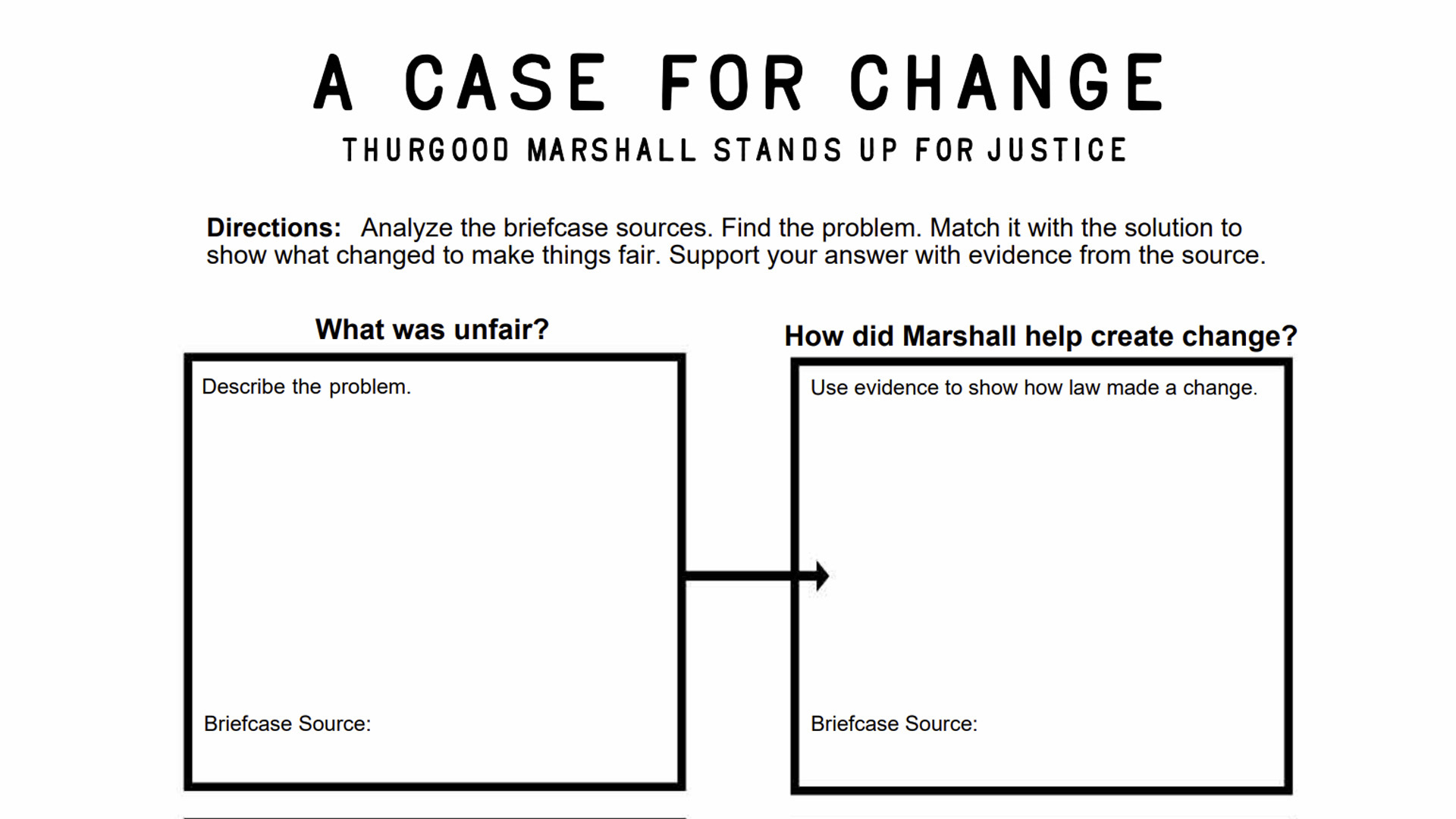
PRINTABLE
Students use this organizer to practice cause-and-effect reasoning in A Case for Change. With primary sources, they match problems with solutions and record evidence showing how laws created change in society.
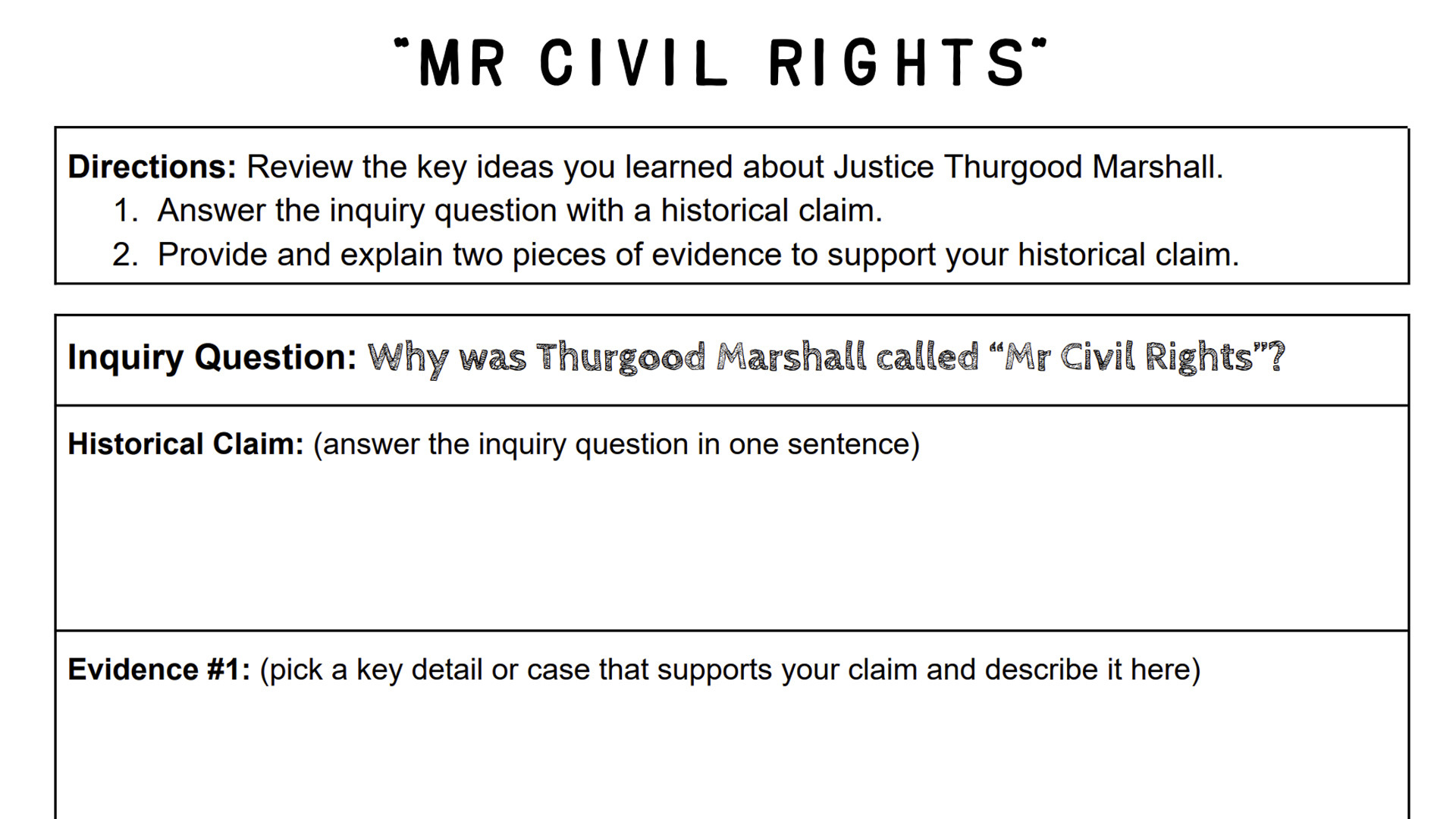
PRINTABLE
This organizer helps students engage in the Question Formulation Technique (QFT) lessons and a guided inquiry to explore the life of Thurgood Marshall.


